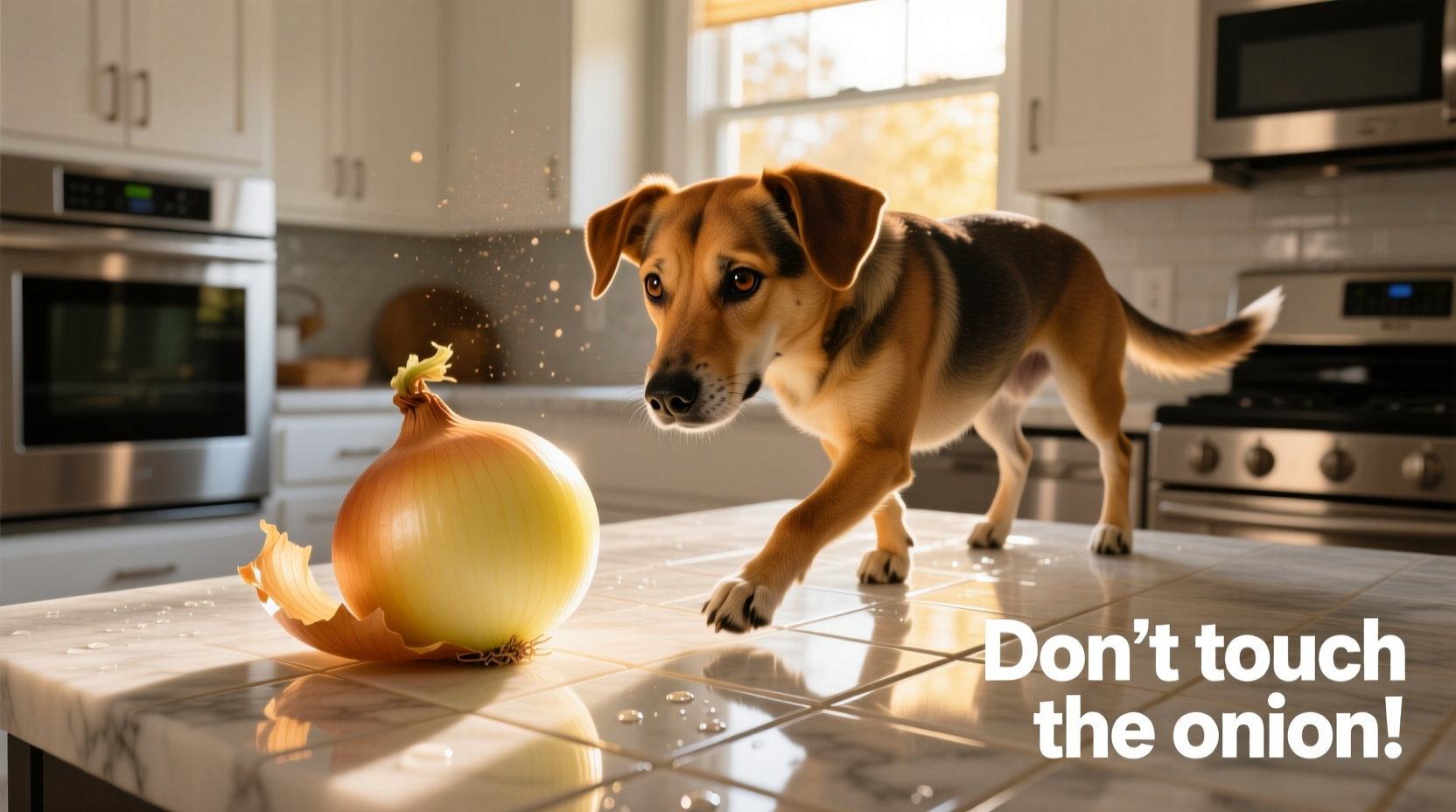Understanding Onion Toxicity in Dogs: The Science Behind the Danger
When dogs consume onions, their digestive system breaks down the allium family vegetables into highly reactive oxidants. These compounds target red blood cells, specifically damaging hemoglobin—the oxygen-carrying protein. This process, called hemolysis, causes red blood cells to rupture prematurely, reducing oxygen delivery throughout the body.
Veterinary research from the ASPCA Animal Poison Control Center confirms that as little as 15-30 grams of onion per kilogram of body weight can trigger toxicity. For a 20-pound dog, that's equivalent to just half a cup of chopped onions.
How Different Onion Forms Affect Your Dog
| Onion Form | Toxicity Level | Danger Threshold (per 20lb dog) | Notes |
|---|---|---|---|
| Raw onions | High | ¼ cup | Most concentrated form of toxins |
| Cooked onions | High | ⅓ cup | Toxins remain after cooking |
| Onion powder | Extreme | 1 tsp | Concentrated form—most dangerous |
| Onion broth | Moderate | ½ cup | Toxins leach into liquid |

Symptom Timeline: What to Watch For
Onion toxicity doesn't cause immediate symptoms, creating dangerous false security. The hemolytic process develops over days:
- 0-24 hours: Vomiting, diarrhea, abdominal pain (not always present)
- 24-72 hours: Lethargy, weakness, decreased appetite
- 3-5 days: Pale gums, rapid breathing, dark urine (hemoglobinuria), collapse
According to Veterinary Information Network clinical studies, Japanese breeds like Shiba Inus and Akita show heightened sensitivity to onion toxicity due to genetic factors affecting red blood cell structure.
Immediate Action Plan: Your Dog Ate Onions
If your dog consumed onions, follow these vet-recommended steps:
- Calculate exposure: Estimate amount and form consumed (refer to our toxicity table)
- Contact professionals: Call your veterinarian or ASPCA Animal Poison Control (888-426-4435) immediately
- Do NOT induce vomiting unless specifically instructed—onion compounds can cause esophageal damage
- Preserve evidence: Bring packaging or remaining food to the vet appointment
Professional treatment may include intravenous fluids, oxygen therapy, and in severe cases, blood transfusions. Early intervention dramatically improves outcomes—dogs treated within 12 hours have 95% recovery rates according to American Veterinary Medical Association data.
Preventing Onion Exposure: Practical Household Strategies
Protect your dog with these evidence-based prevention methods:
- Store onions and garlic in closed cabinets—not on countertops
- Use designated "dog-safe" meal prep areas away from allium vegetables
- Read labels carefully—onion powder hides in baby food, soups, and processed meats
- Train dogs the "leave it" command using positive reinforcement techniques
- Inform all household members about the dangers of sharing human food
Safe Flavor Alternatives for Dogs
Instead of onions, enhance your dog's food with these vet-approved flavor boosters:
- Low-sodium chicken or beef broth (onion-free)
- Finely grated carrots or zucchini
- Small amounts of blueberries or apple slices
- Plain canned pumpkin (not pie filling)











 浙公网安备
33010002000092号
浙公网安备
33010002000092号 浙B2-20120091-4
浙B2-20120091-4